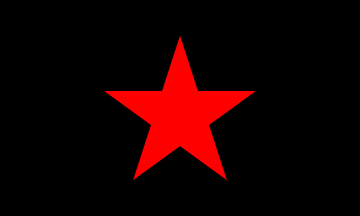| History: |
The Revolution and the Rise of the United Anarchist Councils in Valerianos
In the early years of the 21st century, as the global political and economic order teetered under the weight of corruption, inequality, and ecological devastation, the small village of Valerianos became the unexpected spark of a revolutionary movement. The disillusionment with centralized authority had been brewing for decades, but it was a confluence of economic hardship, state repression, and the radical philosophy of anarchism that set the stage for an uprising unlike any before.
The revolution began as a spontaneous insurrection against a government that had long ignored the needs of its people. Austerity measures had stripped local communities of their resources, and increasing police militarization had turned everyday life into a battle for survival. The breaking point came when a newly proposed land development project threatened to displace entire families in Valerianos, selling their ancestral lands to corporate interests. What started as a protest quickly escalated into an all-out revolt, as farmers, workers, and students barricaded roads, seized local infrastructure, and repelled state forces through decentralized guerrilla tactics.
Inspired by the ideas of Max Stirner, Mikhail Bakunin, and the direct-action ethos of historical anarchist movements, revolutionaries in Valerianos rejected hierarchical leadership and instead established councils to coordinate their resistance. These councils, composed of voluntary delegates rather than representatives, ensured that all decisions were made through consensus and mutual aid rather than coercion. Within weeks, the revolution spread beyond Valerianos, linking with insurgents in neighboring regions who sought to create a federation of autonomous communities free from state and capitalist control.
With the government unable to crush the uprising and international forces hesitant to intervene due to the unpredictable nature of the rebellion, the revolutionaries seized the moment to establish the United Anarchist Councils. This federation was based on a network of self-managed communes, each operating under principles of direct democracy, communal ownership, and voluntary association. While some communes specialized in agriculture and energy production, others became hubs for education, medicine, and technological innovation, ensuring that the new society could sustain itself without reliance on external authorities.
Unlike previous attempts at stateless societies, the United Anarchist Councils took lessons from history to ensure their longevity. They developed a decentralized defense force to protect their autonomy, built cooperative economic structures based on mutual exchange rather than money, and adopted a flexible legal framework rooted in restorative justice rather than punitive law. Education became a cornerstone of the movement, with free schools and learning centers emphasizing critical thinking, history, and self-sufficiency.
The world watched in awe—and fear—as Valerianos transformed into a thriving, stateless society. Some labeled it a utopian experiment destined to fail, while others saw it as a glimpse of a post-capitalist future. Attempts to undermine the federation, whether through sabotage, misinformation, or economic blockade, were met with resilience, as the councils adapted and evolved in response to every challenge. The United Anarchist Councils proved that, even in modern times, a society without rulers was not only possible but sustainable, built upon the self-determination and cooperation of its people. |


















